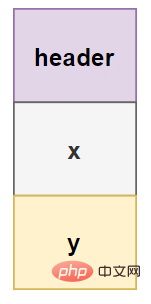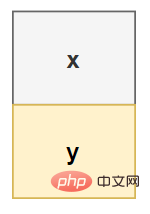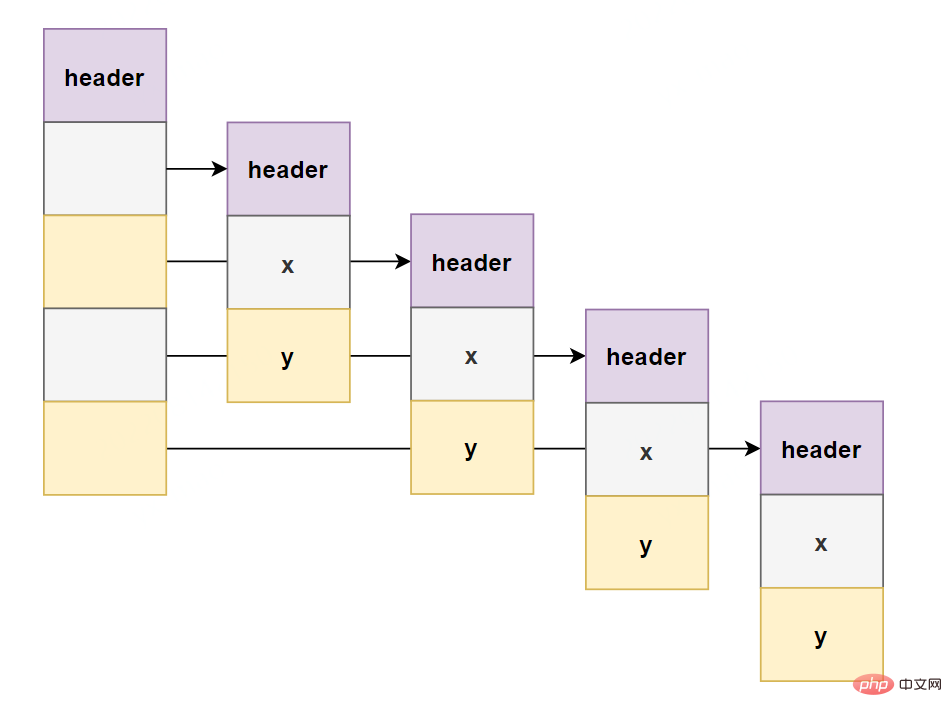Let's talk about the Java Valhalla Project
This article brings you relevant knowledge about java, which mainly introduces the introduction of the Java Valhalla Project and a detailed introduction around the theme. Let’s take a look at it together. I hope it will be helpful to everyone. helpful.

Recommended study: "java Video Tutorial"
In this article, we will introduce the Valhalla project - its historical reasons , the current state of development, and what it will bring to everyday Java developers after its release.
Motivation and reasons for the Valhalla project
Oracle's Java language architect Brian Goetz said in a speech that one of the main motivations for the Valhalla project is the desire to adapt the Java language and runtime to modern hardware. . When the Java language was born (at the time of writing about 25 years ago), access to memory and arithmetic operations cost about the same.
Today, this situation has changed, and memory fetch operations are 200 to 1000 times more expensive than arithmetic operations. In terms of language design, this means that indirect operations that result in pointer extractions can adversely affect overall performance.
Since most Java data structures in an application are objects, we can think of Java as a Pointer-intensive language (although we usually don't see or manipulate them directly) . This pointer-based object implementation is used to enable object identification, which itself is used for language features such as polymorphism, mutability, and locking. By default, these properties apply to every object regardless of whether they are actually needed.
Following the chain of identifiers leading to pointers and the chain of pointers leading to indirection, indirection has a performance drawback and the logical conclusion is to delete those data structures that do not require them. This is where value types come into play.
Value Types Value Types
The concept of value types is to represent pure data aggregation. This removes functionality from regular objects. So we have pure data, no identity. Of course, this means that we also lose the functionality that can be achieved using object identification. Therefore, equality comparisons can only be made based on status. Therefore, we cannot use representation polymorphism, nor can we use immutable or non-nullable objects.
Since we no longer have object identifiers, we can abandon pointers and change the general memory layout of value types instead of objects. Let's compare the memory layout between class points and corresponding value type points.
The code and corresponding memory layout of the regular Point class are:
final class Point {
final int x;
final int y;
}
On the other hand, the value type Point The code and corresponding memory layout would be:
value class Point {
int x;
int y
}
This allows the JVM to flatten value types into arrays and objects, as well as other value types.
In the image below, we show the indirect negative effects when using the Point class in an array:

On the other hand, Here we see the corresponding memory structure for the value type Point[]:

It also enables the JVM to pass value types on the stack without having to Allocate them on the heap. In the end, this means that we get data aggregations with runtime behavior similar to Java primitives like int or float.
But unlike primitives, value types can have methods and fields. We can also implement interfaces and use them as generic types.
Therefore, we can look at value types from two different perspectives:
- Faster objects
- User-defined primitives
As an extra icing on the cake, we can use value types as generic types without boxing. This leads us directly to another big project Valhalla feature: specialized generics.
Specialized Generics
When we want to generalize a language primitive, we currently use boxed types, such as integer representationIntegeror floating point representation Float. This boxing creates an extra layer of indirection, thereby defeating the purpose of using primitives to improve performance in the first place.
As a result, we see many specializations for primitive types in existing frameworks and libraries, such as IntStream<t></t> or ToIntFunction<t></t> . This is done to maintain the performance improvements of using primitives.
Therefore, specializing generics is to eliminate the need for these "hacks". Instead, the Java language strives to enable generic types for basically everything: object references, primitives, value types, and maybe even void.
Conclusion
We have a preliminary understanding of the changes that the Valhalla project will bring to the Java language. Two of the main goals are to improve performance and reduce leaky abstractions.
Performance enhancements are addressed by flattening the object graph and removing indirection. This results in a more efficient memory layout and fewer allocations and garbage collections.
When used as a generic type, primitives and objects have more similar behavior, which is a better abstraction.
Recommended study: "java video tutorial"
The above is the detailed content of Let's talk about the Java Valhalla Project. For more information, please follow other related articles on the PHP Chinese website!

Hot AI Tools

Undresser.AI Undress
AI-powered app for creating realistic nude photos

AI Clothes Remover
Online AI tool for removing clothes from photos.

Undress AI Tool
Undress images for free

Clothoff.io
AI clothes remover

Video Face Swap
Swap faces in any video effortlessly with our completely free AI face swap tool!

Hot Article

Hot Tools

Notepad++7.3.1
Easy-to-use and free code editor

SublimeText3 Chinese version
Chinese version, very easy to use

Zend Studio 13.0.1
Powerful PHP integrated development environment

Dreamweaver CS6
Visual web development tools

SublimeText3 Mac version
God-level code editing software (SublimeText3)

Hot Topics
 1655
1655
 14
14
 1414
1414
 52
52
 1307
1307
 25
25
 1254
1254
 29
29
 1228
1228
 24
24
 Break or return from Java 8 stream forEach?
Feb 07, 2025 pm 12:09 PM
Break or return from Java 8 stream forEach?
Feb 07, 2025 pm 12:09 PM
Java 8 introduces the Stream API, providing a powerful and expressive way to process data collections. However, a common question when using Stream is: How to break or return from a forEach operation? Traditional loops allow for early interruption or return, but Stream's forEach method does not directly support this method. This article will explain the reasons and explore alternative methods for implementing premature termination in Stream processing systems. Further reading: Java Stream API improvements Understand Stream forEach The forEach method is a terminal operation that performs one operation on each element in the Stream. Its design intention is
 PHP: A Key Language for Web Development
Apr 13, 2025 am 12:08 AM
PHP: A Key Language for Web Development
Apr 13, 2025 am 12:08 AM
PHP is a scripting language widely used on the server side, especially suitable for web development. 1.PHP can embed HTML, process HTTP requests and responses, and supports a variety of databases. 2.PHP is used to generate dynamic web content, process form data, access databases, etc., with strong community support and open source resources. 3. PHP is an interpreted language, and the execution process includes lexical analysis, grammatical analysis, compilation and execution. 4.PHP can be combined with MySQL for advanced applications such as user registration systems. 5. When debugging PHP, you can use functions such as error_reporting() and var_dump(). 6. Optimize PHP code to use caching mechanisms, optimize database queries and use built-in functions. 7
 PHP vs. Python: Understanding the Differences
Apr 11, 2025 am 12:15 AM
PHP vs. Python: Understanding the Differences
Apr 11, 2025 am 12:15 AM
PHP and Python each have their own advantages, and the choice should be based on project requirements. 1.PHP is suitable for web development, with simple syntax and high execution efficiency. 2. Python is suitable for data science and machine learning, with concise syntax and rich libraries.
 PHP vs. Other Languages: A Comparison
Apr 13, 2025 am 12:19 AM
PHP vs. Other Languages: A Comparison
Apr 13, 2025 am 12:19 AM
PHP is suitable for web development, especially in rapid development and processing dynamic content, but is not good at data science and enterprise-level applications. Compared with Python, PHP has more advantages in web development, but is not as good as Python in the field of data science; compared with Java, PHP performs worse in enterprise-level applications, but is more flexible in web development; compared with JavaScript, PHP is more concise in back-end development, but is not as good as JavaScript in front-end development.
 PHP vs. Python: Core Features and Functionality
Apr 13, 2025 am 12:16 AM
PHP vs. Python: Core Features and Functionality
Apr 13, 2025 am 12:16 AM
PHP and Python each have their own advantages and are suitable for different scenarios. 1.PHP is suitable for web development and provides built-in web servers and rich function libraries. 2. Python is suitable for data science and machine learning, with concise syntax and a powerful standard library. When choosing, it should be decided based on project requirements.
 Java Program to Find the Volume of Capsule
Feb 07, 2025 am 11:37 AM
Java Program to Find the Volume of Capsule
Feb 07, 2025 am 11:37 AM
Capsules are three-dimensional geometric figures, composed of a cylinder and a hemisphere at both ends. The volume of the capsule can be calculated by adding the volume of the cylinder and the volume of the hemisphere at both ends. This tutorial will discuss how to calculate the volume of a given capsule in Java using different methods. Capsule volume formula The formula for capsule volume is as follows: Capsule volume = Cylindrical volume Volume Two hemisphere volume in, r: The radius of the hemisphere. h: The height of the cylinder (excluding the hemisphere). Example 1 enter Radius = 5 units Height = 10 units Output Volume = 1570.8 cubic units explain Calculate volume using formula: Volume = π × r2 × h (4
 PHP's Impact: Web Development and Beyond
Apr 18, 2025 am 12:10 AM
PHP's Impact: Web Development and Beyond
Apr 18, 2025 am 12:10 AM
PHPhassignificantlyimpactedwebdevelopmentandextendsbeyondit.1)ItpowersmajorplatformslikeWordPressandexcelsindatabaseinteractions.2)PHP'sadaptabilityallowsittoscaleforlargeapplicationsusingframeworkslikeLaravel.3)Beyondweb,PHPisusedincommand-linescrip
 PHP: The Foundation of Many Websites
Apr 13, 2025 am 12:07 AM
PHP: The Foundation of Many Websites
Apr 13, 2025 am 12:07 AM
The reasons why PHP is the preferred technology stack for many websites include its ease of use, strong community support, and widespread use. 1) Easy to learn and use, suitable for beginners. 2) Have a huge developer community and rich resources. 3) Widely used in WordPress, Drupal and other platforms. 4) Integrate tightly with web servers to simplify development deployment.




